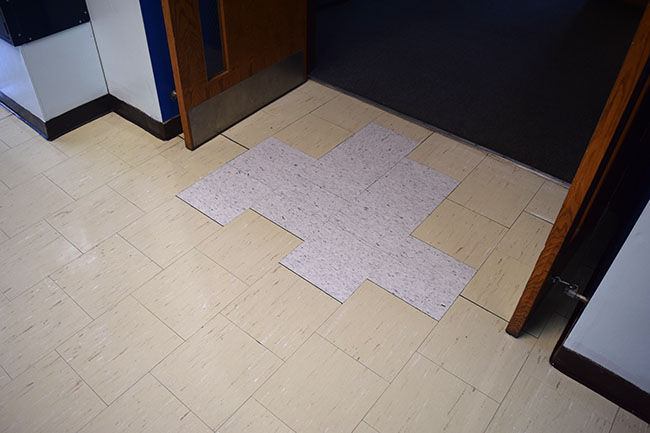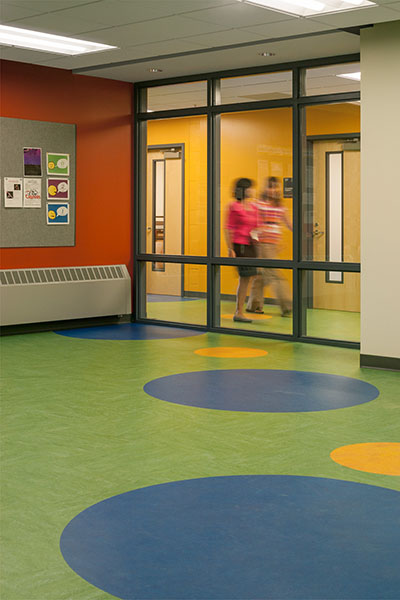A Close Look at Vinyl: a Ubiquitous Material with a Questionable Future
As architects and designers, we rely on product reps and vendors to keep us up to date on the latest materials. But we have learned to approach all claims made by manufacturers with a healthy dose of skepticism. Over the past 10 years, a new wave of research has brought attention and renewed consciousness to the impacts of many common building materials on human health. One of these materials that has gotten a lot of attention is one of the most prevalent in the building industry: vinyl.
Vinyl has been around in one form or another for about 150 years. Vinyl Chloride, a gas, was first synthesized from fossil fuels (ethylene dichloride) in 1835. A German chemist used this gas to create Poly-Vinyl Chloride (PVC) in 1872. This material was considered useless, and it wasn’t until the 1920s that Waldo Sermon, an employee of BF Goodrich, discovered that it made a good material for shock absorber caps.
We now know that vinyl chloride (the original gaseous compound) is hazardous to human health. The EPA has linked short-term exposure to central nervous system effects such as dizziness, drowsiness and headaches, and long-term exposure has been linked to liver damage and cancer. But before all of the health effects were fully known, vinyl chloride gas was used for years in many applications, including as an aerosol propellant(1), a refrigerant, and even as an inhaled anesthetic. This practice was discontinued in the 1960s.
But vinyl, or PVC, continues to be a popular component of many building materials. The use of PVC pipes has become standard practice in home construction. Vinyl wallcovering is used in hotels and medical buildings because it is so easy to clean. And many schools use Vinyl Composition Tile (VCT) as their principal flooring material because of its low initial cost and high durability.

Like all materials, vinyl has its pros and cons. It is low in cost and relatively strong and durable, but its negative aspects include concerns for human health, its reliance on fossil fuels, and high maintenance requirements. Building owners should be aware of all of these issues when selecting the right material. To illuminate these factors, let’s look at one example in particular: VCT.
Vinyl Composition Tile is one of the cheapest institutional grade flooring options to install. It is, however, also one of the most expensive to maintain.(2) Linoleum floor tile is an alternative to VCT that is gaining in popularity in part because it has very low maintenance costs, so it turns out to be cheaper to own over the life of the floor. Owners should always consider the cost of maintenance for any given material or system, which can be many times the cost of installation alone.


VCT also has some hidden environmental costs. Many vinyl flooring systems contain Phthalates, a common plasticizer that was banned by the US Congress for use in children’s toys due to negative health effects. (3) Some retailers have agreed to stop selling flooring products that contain Phthalates, but only just this year (2016). (4) There is also much debate on the environmental impacts of new vinyl production, which uses copious quantities of Chlorine gas and creates byproducts like Dioxins and other harmful toxins. (5)
The world of material science can be confusing and complicated. It would behoove the owners of public buildings to scrutinize the claims of product manufacturers, as history shows that manufacturers of toxic products are often reluctant to admit their products are harmful. In our role as architects, we act on behalf of our clients, building owners, and ultimately, building occupants, to find appropriate materials that have been certified by third party laboratory testing agencies as healthy for indoor environments. It is important to look at long-term benefits and potential effects on human health, and weigh these factors against initial costs.
The following online sources were used in this article and can be referenced for more information:
- Markowitz, Gerald; Rosner, David (2013). Deceit and Denial: The Deadly Politics of Industrial Pollution. Berkeley, California Press: University of California Press. p. 185 – via Questia
- https://www.facilitiesnet.com/flooring/article/Considering-the-Life-Cycle-Cost-of-Flooring-Facilities-Management-Flooring-Feature–6484
- https://www.cpsc.gov/en/Business–Manufacturing/Business-Education/Business-Guidance/Phthalates-Information/
- https://www.consumerreports.org/cro/news/2015/08/can-your-floor-make-you-sick/index.htm
- https://www.greenbuildingadvisor.com/blogs/dept/green-building-blog/procon-vinyl-lethal